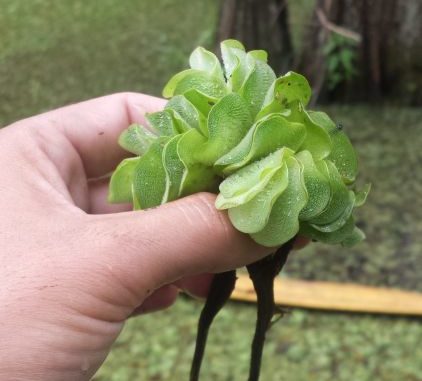
Fishermen encouraged to inspect boats at launch
Since 1998 — when giant salvinia was first discovered in Louisiana at Toledo Bend — the state’s Department of Wildlife and Fisheries has been fighting an uphill battle to keep the invasive South American plant under control.
But when you consider that — according to the LSU AgCenter —a single plant can cover 40 square miles in just three months under ideal conditions, it puts the scale of that task into perspective.
“I would love to be able to eradicate the stuff, but all it takes is one little piece to be left in place, and it can grow from there. So there’s no way you can kill every single piece of this plant — it’s just not physically possible,” said Jillian Day, LDWF’s aquatic plant control coordinator. “A lot of the issues we’re having is getting to remote areas out in the marsh where you have little pockets where this stuff can grow — that a boat out there spraying can’t necessarily reach.
“So you have a nursery ground, and when the water comes up, it transports it somewhere else. Then you’re right back to to same point.”
Spraying herbicide is just one tool the department uses in an attempt to keep the plant under control. Day said drawdowns also help keep giant salvinia in check, as do weevils that feed on the plant.
The weevils have been relatively effective, but they cannot survive in colder weather.
“We did have a mild winter, but we’re still having survival issues in some of the northern areas,” Day said. “So from about Alexandria north, those temperatures do drop below a certain point where the weevils do not survive in winter.”
Currently there are three ponds in the state where weevils are raised and harvested — in St. Gabriel, Clinton and New Iberia. Typically, Day said weevil populations are monitored for peak harvest results, usually in May and again in September.
“The larvae actually eat around the roots, which stops the nutrient transport and shuts down the plant,” she said. “In their adult stage, you’ll see a shotgun hole pattern, where there will be holes in the leaves of the plant.
“They all munch on it at some point or another in their lifespan.”
LSU is currently doing research on developing a more cold-resistant weevil, but in the meantime, Day encouraged fishermen in waters where giant salvinia is present to be extra vigilant when trailering their boats.
“If you’re in a waterbody where you see it everywhere, and you know you’re heading somewhere else, do an inspection at the boat launch and make sure you remove it at the site you’re at,” she said. “Don’t transport it to other water bodies that do not have it already.
“That’s part of the issue as to why it’s spreading: people put their boat in one waterbody that has it, pick up and trailer from there and go someplace else and drop in, and they transport it that way.”


